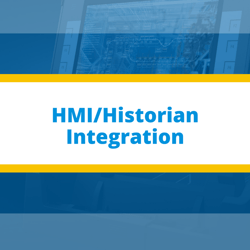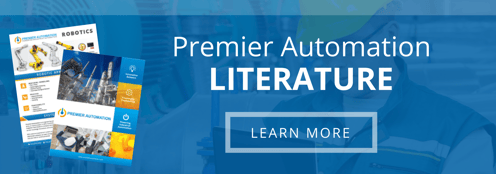 HMIs, or human-machine interfaces, allow easy control and interaction between operator and machine. However, the data they collect can be underutilized. This is why integrating historians with HMIs is recognized as an effective data collection method.
HMIs, or human-machine interfaces, allow easy control and interaction between operator and machine. However, the data they collect can be underutilized. This is why integrating historians with HMIs is recognized as an effective data collection method.
Historians are software for data collection which can then be stored in spreadsheets, files, and other database products. This allows the information to be accessible for reporting on different trends and to refer back to later on. HMIs allow the data to be seen in real time before the historian software records it, as well as historical data replay if the HMI/SCADA is set up properly.
Applications
HMI/historian integration can be applied in many different circumstances on a plant floor. From analysis of data to determine the cause of an issue to troubleshooting based on historical and current data, the use of both technologies allow operators and managers to determine general machine data or even solve problems using the data gathered.
The data can also be used to manage the plant by managers and owners. The data can show which machines need to be evaluated due to frequent breakdown, how many resources have been used in a given task, and whether the plant’s schedule needs to be adjusted. Managers can take the data and use it to properly address any issues that occur. Businesses as a whole can also use the data to pull information for customers and business plans.
Benefits
While both technologies on their own can benefit a company, using the two together can increase those benefits immensely. HMI/historian integration allows for many uses for the data collected and recorded that benefit a plant in the long and short term. Many of these benefits focus around problem solving and analysis.
HMIs and historians both allow for reports and records of a situation in the present and for past situations. These reports can be compared and analyzed to determine the best direction to take during a problem or to create a cost effective operation plan. As mentioned above, HMIs can also add visuals to the real time data being recorded, as well as historical data replay if the HMI/SCADA has been set up for that function. This can also be used to compare past and present circumstances and operations on the plant floor, making troubleshooting issues faster and more efficient.
Historians allow for operators to perform extensive and complicated calculations, and HMIs can allow operators to specifically interact with a machine to either test or run those calculations. This also allows them to record and see the results of the calculations as they occur. HMIs and historian integration would also allow for efficiency measurement and analysis of different processes in the plant. These measurements can be used to determine where improvements can be made and what adjustments need to occur to increase efficiency and save money.
HMI/historian integration is a valuable strategy for any plant looking to better understand their equipment and efficiently solve issues. Even if the data is just used to analysis and recording for later reference, the records can be invaluable in case of a crisis or when evaluating process efficiency.
Interested in learning more? Visit our website www.premierautomation.com, or talk to one of our specialists today.




